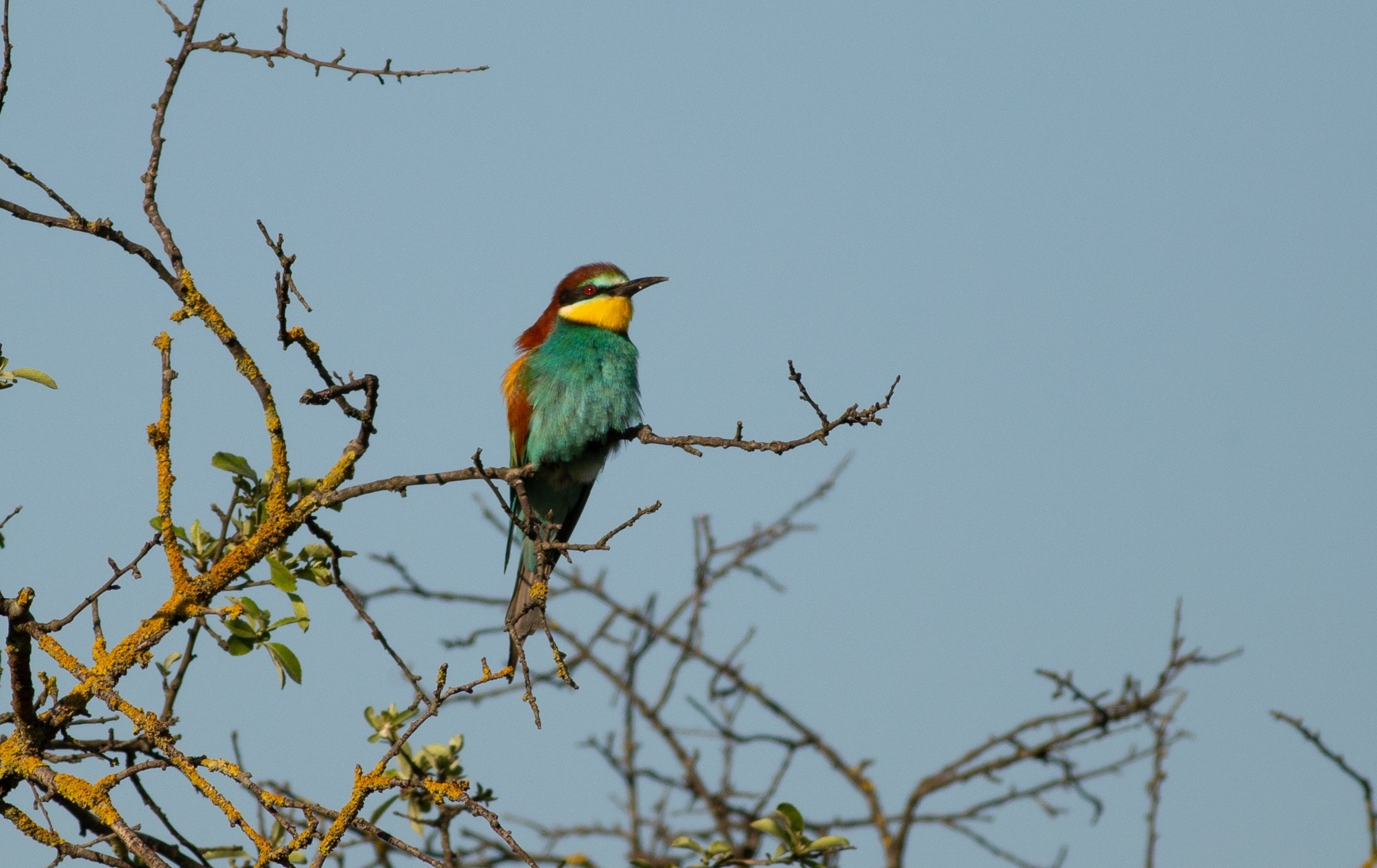© Turkuvaz Haberleşme ve Yayıncılık 2024
The arrival of a "Southern carmine bee-eater" was observed, which is highly unusual and unexpected in the Kızılırmak Delta wetland and Bird Sanctuary, one of the most important wetlands with the second most enormous drainage basin in Türkiye.
Ondokuz Mayıs University (OMU) Ornithology Research Center associate professor Kiraz Erciyas Yavuz told Anadolu Agency (AA) that during the fieldwork carried out in the delta within the scope of the "Kizilirmak Delta Monitoring and Data Management Project" supported by the French Global Environment Fund, a bird researcher, Nizamettin Yavuz, observed the southern ruby bee-eater (Merops Nubicoides).
Pointing out that it is the first time that the bird was sighted in Türkiye, Yavuz said, "The species is the 500th bird species in Türkiye and the 365th bird species in the Kızılırmak Delta. The formerly carmine bee-eater is normally found across sub-equatorial Africa, ranging from KwaZulu-Natal and Namibia to Gabon, eastern Democratic Republic of Congo and Kenya."

Yavuz explained that this new species, which is a summer migrant species in Türkiye, was fed insects to watch the species for a long time.
Pointing out that these migratory species are known to leave the area in March and migrate to the north, Yavuz said: "The Kızılırmak Delta is on the UNESCO World Heritage Tentative List and is counting down to be included in the main list with its rich flora, fauna and natural beauty. The southern ruby-colored bee-eater species was recorded for the first time this far north. This individual, followed by other bee-eaters, probably followed them into normal conditions. Therefore, this bird's sighting in Turkish lands is a valuable contribution to International Biodiversity Day on May 22."
Yavuz added that the new species has a length of about 25 centimeters (9.84 inches) and a weight of 45 grams (1.59 ounces); its crest and undertail are ruby-colored and can be easily recognized by its brick-red back and pinkish or turquoise lower body. Their diet is primarily of bees and other flying insects, and their major hunting strategy involves hawking flying insects from a perch.
